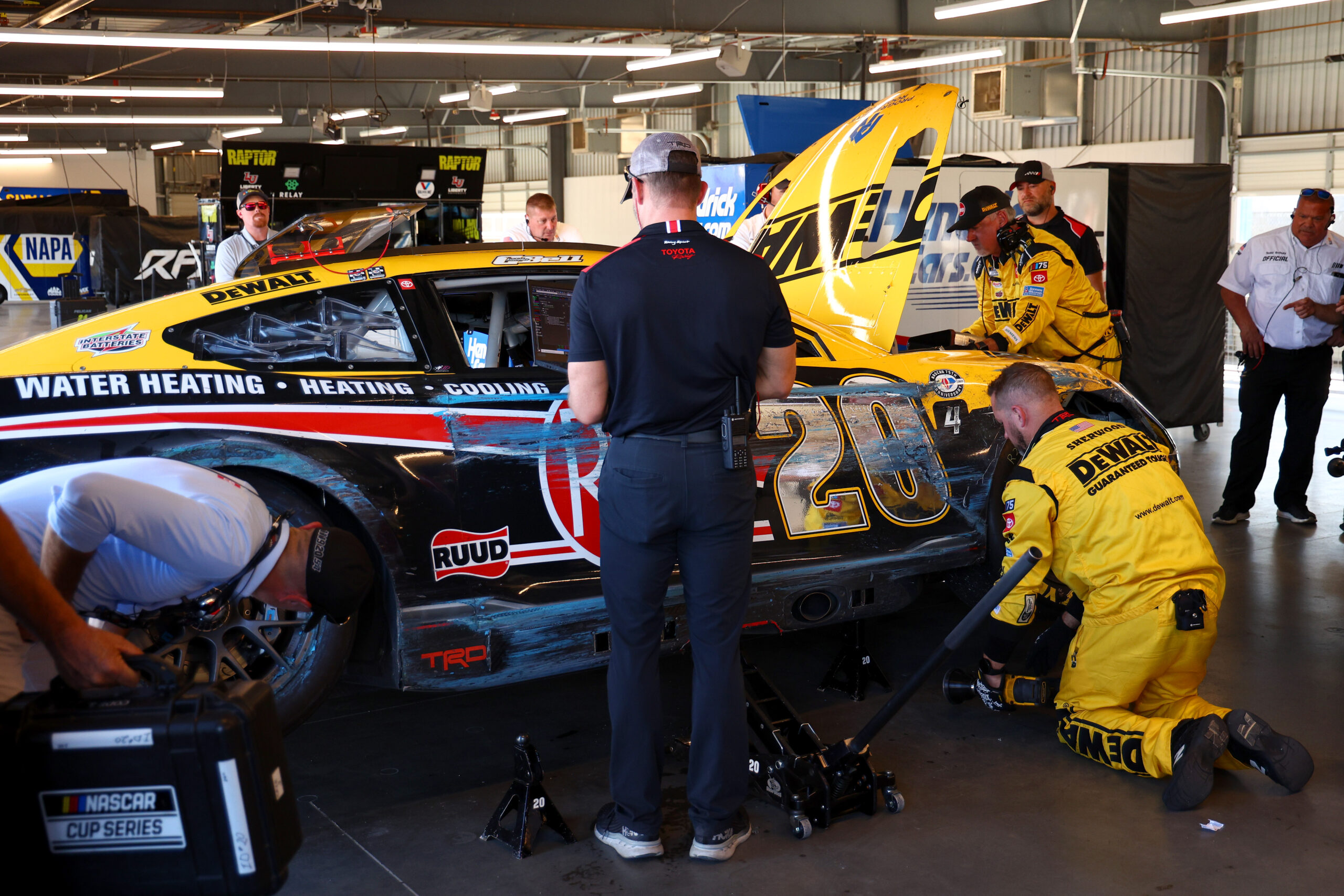
Christopher Bell’s Championship fight came to an unfortunate end at Phoenix as his brake rotor failed in the early laps of the Championship Race at Phoenix Raceway. This brought back memories of the race at Gateway in June, a similar track to Phoenix, where there were four brake rotor failures. Should NASCAR look into these issues with brake rotors, and should changes be made?
Steve Letarte did a great job explaining what happened to Bell on the NBC broadcast. Here is what went wrong.
Our @NASCARonNBC analyst @SteveLetarte takes viewers inside the Toyota Virtual Car to detail exactly what led to #Championship4 driver Christopher Bell's brake failure. pic.twitter.com/FfqXeQTKrP
— NBC Sports PR (@NBCSportsPR) November 5, 2023
One of two things can cause a brake failure according to Letarte. Either there is not enough cooling on the brakes or the brakes are used too much by the driver. As a result, the brake rotors overheat, expand, and, eventually, contact the caliper and explode. Letarte’s theory is that Bell used too much brake, and that is ultimately what caused the brake failure.
At Gateway in June, four drivers had their brake rotors fail as follows: Carson Hocevar, Tyler Reddick, Noah Gragson, and Bubba Wallace. Gragson had the biggest consequence of all, as concussion-like symptoms from the impact sidelined Gragson for the following race at Sonoma.
We did not get the same analysis of the brake rotor failures at Gateway, but, they were common. Phoenix and Gateway are very similar tracks in that they are flat in the corners, which means drivers have to slow down more, therefore using more brakes, when entering the corner.
As much of a problem as this was at Gateway, Bell was the only driver to suffer this failure at Phoenix. It is entirely possible that the failure was down to either driver error, poor setup, or just a faulty part. Think about races at other tracks that use a lot of brakes.
Road courses did not have this issue, even in places like COTA with gargantuan straightaways into tight, hairpin corners. Martinsville, which is a track that is notorious for being hard on brakes, had no brake failures. Frankly, it’s just not a major issue.
Now, is it worth it for NASCAR to take a second look at Bell’s failure and see if there should be changes made at tracks like Phoenix? It might be worthwhile to take a second look. However, NASCAR needs to be careful about how far they go if they make any changes.
Every track on the NASCAR schedule is a bit different. If NASCAR makes overarching changes because of issues at just one track type, it can negatively affect other races. The Next-Gen car as a whole is a great example of this.
The changes made fixed a lot of the issues with the intermediate tracks, but, at the expense of short tracks and road courses. NASCAR needs to avoid this if they do make changes, and they need to be careful because brake failures are about as dangerous of an accident as drivers can have.
It’s important for NASCAR to react when they need to, but they also cannot overreact. It’s not out of the question, however, that a change can be made when NASCAR heads to a flat race track like Phoenix, New Hampshire, or Gateway next year. Overarching changes for every race track, however, are unlikely.